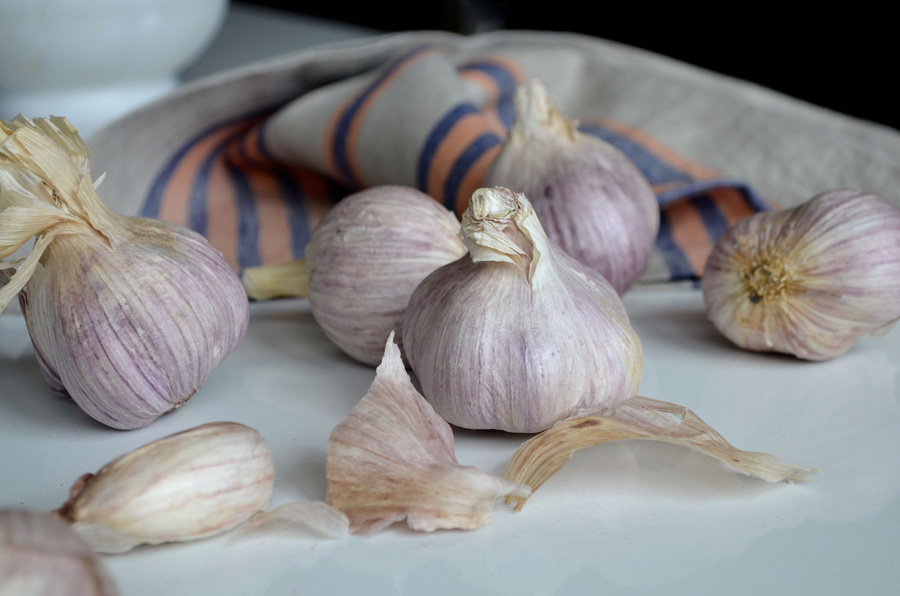Ajos

Purple garlic
The garlic plant (Allium sativum) produces a bulb that is the most widely used part of the plant. The bulbs are usually divided into 6 to 12 sections commonly called cloves, that can be used raw or cooked.



The use of garlic has been traced to over 7,000 years ago, both for culinary and medicinal purposes. Its properties have been widely studied for their effect on the cardiovascular system, and even as a remedy for the common cold, although there’s not enough evidence to support this later use. During the 1st and 2nd World Wars, it was used as an antiseptic and to prevent gangrene.


Garlic is native to central Asia, China being the country with the highest production (over 80% of global production) and even though it is a fundamental component in many dishes of various regions of Asia, and it’s also used in parts of South and Central America, it has long been a staple in the Mediterranean region. In Europe, there are a number of garlics with Protected Geographical Status, like the ones grown in Nubia, Veneto and Ferrara in Italy, Lomagne, Drome and Lautrec in France, and Las Pedroñeras in Spain, where purple garlic is produced.

Used as a condiment, or as an ingredient in many dishes, garlic has a pungent and spicy flavor that softens with cooking.
I can say with certainty that not a day goes by that I don’t use garlic in my Spanish dishes, from sofrito (combined with onion and tomato) to alioli (emulsified with egg and olive oil) or ajoblanco (blended with almonds and olive oil).
Photo credits
©Natacha Sanz-Caballero, La Veguilla

